Disclaimer: This content is for educational purposes only, not medical advice. Always consult with a doctor before making significant changes to your diet, especially if you have pre-existing health conditions.
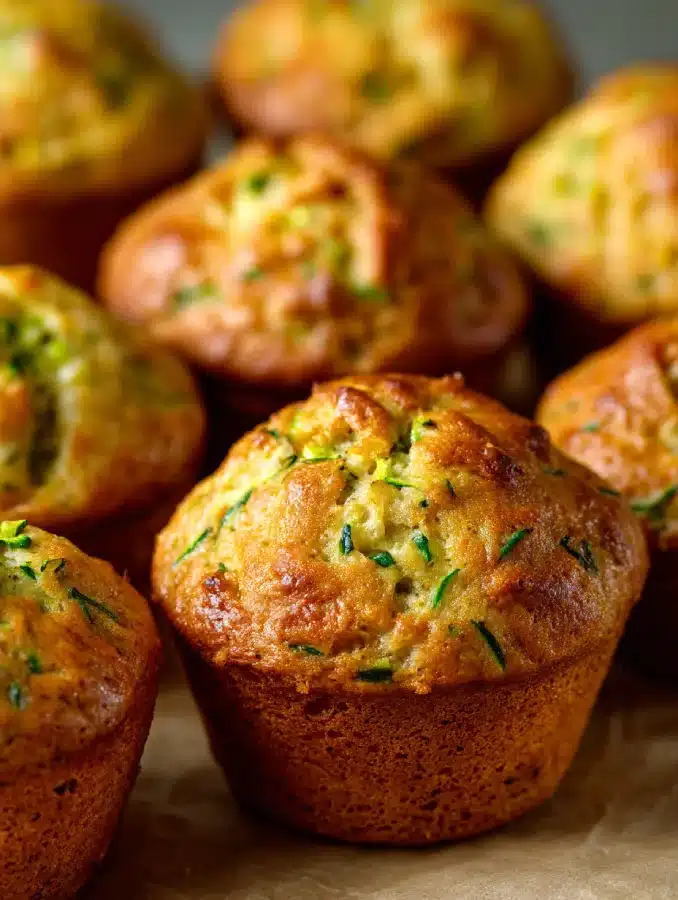
The first time I baked zucchini muffins, I didn’t tell anyone what was in them. I was in my twenties, baking for a Sunday brunch with friends, and I worried the word “zucchini” would scare them off. I set the warm muffins on the table, watched them disappear one by one, and only then revealed the secret ingredient. The looks of surprise were priceless. They couldn’t believe these moist, tender muffins came from a vegetable that usually played sidekick to pasta or salad.
Now, zucchini muffins are one of my go-to bakes when I need something fast, wholesome, and crowd-pleasing. They work in every season, but shine brightest in late summer when zucchini is everywhere. They’re versatile too, whether you’re making chocolate chip zucchini muffins for kids, savory zucchini muffins for brunch, or a healthy zucchini muffin for weekday snacks. You’ll find they’re just as easy to love as classics like zucchini bread or zucchini fritters.
In this Article
Key Takeaways: What Makes Zucchini Muffins Special
- No peeling required, zucchini skin is thin and adds nutrients and color.
- Naturally moist without extra butter or oil.
- Easy to adapt to sweet or savory flavors.
- Freeze beautifully for grab-and-go snacks.
- A smart way to sneak extra veggies into your day.
- Pair perfectly with coffee, tea, or a dollop of yogurt.

Zucchini Muffins Recipe (2025)
Equipment
- 1 box grater – for grating zucchini
- 1 large mixing bowl – for combining ingredients
- 1 clean kitchen towel or cheesecloth – for squeezing moisture
- 1 muffin tin – standard size, 12 cups
- 1 whisk – for mixing batter
- 1 spatula – for folding ingredients
Ingredients
- 2 cups zucchini grated and well-drained (about 2 medium)
- 2 large eggs
- 1/2 cup coconut sugar or brown sugar
- 1/3 cup olive oil or melted coconut oil
- 1/4 cup unsweetened applesauce
- 1 tsp vanilla extract
- 1 1/2 cups all-purpose flour or half whole wheat for healthier option
- 1 tsp baking soda
- 1 tsp cinnamon
- 1/4 tsp nutmeg
- 1/2 tsp salt
- Optional: 1/2 cup chocolate chips nuts, or dried fruit
Instructions
- Preheat oven to 350°F (175°C). Line a 12-cup muffin tin with paper liners or grease lightly.
- Grate zucchini, place in a towel, and squeeze out excess moisture. Measure after draining.
- In a large bowl, whisk together eggs, sugar, oil, applesauce, and vanilla until smooth.
- In another bowl, mix flour, baking soda, cinnamon, nutmeg, and salt.
- Gradually fold dry ingredients into wet ingredients until just combined, do not overmix.
- Gently fold in zucchini and any add-ins like chocolate chips or nuts.
- Divide batter evenly among muffin cups, filling about 3/4 full.
- Bake for 18–22 minutes, or until a toothpick inserted into the center comes out clean.
- Let muffins cool in pan for 5 minutes, then transfer to a wire rack. Serve warm or at room temperature.
Notes
Nutrition
Should You Peel Zucchini for Muffins?
The case for keeping the skin
You don’t need to peel zucchini for muffins. The skin is thin, tender, and practically melts into the batter. In fact, keeping the skin on boosts the muffins’ nutritional value, it contains antioxidants, fiber, and a pop of green that looks beautiful in the finished bake.
When grated finely, the skin blends seamlessly into the batter, much like it does in zucchini bread recipes. The texture stays light, and there’s no bitter flavor to worry about.
Pro tip: Use small to medium zucchini for the sweetest flavor and softest skin. Larger zucchini tend to have thicker skins and more seeds, which you can scoop out before grating if you want an ultra-smooth texture.
When to peel (rarely)
If you’re working with a very large garden zucchini and want to make moist zucchini muffins without visible green flecks, for example, in a chocolate version, peeling is optional. But for 95% of recipes, peeling is just extra work with no real payoff.
Keeping the skin on also makes prep quicker, which is one of the reasons I bake zucchini muffins so often. Less fuss, more flavor.
What Do Zucchini Muffins Taste Like?
If you’ve never had zucchini muffins, you might imagine they taste like a vegetable in disguise, but the truth is, they’re closer to a cross between banana bread and carrot cake. Zucchini has a very mild, almost neutral flavor, so it blends into the background and lets spices, vanilla, and add-ins shine.
In sweet zucchini muffins, cinnamon, nutmeg, or even cocoa powder become the stars. The zucchini’s role is to lock in moisture, giving you that soft, tender crumb that stays fresh for days. If you add chocolate chips, you’ll get a decadent muffin that feels indulgent but still packs in a veggie boost, similar to how our zucchini brownie recipe turns chocolate into a stealthy vegetable delivery system.
Savory zucchini muffins are a different story. Here, zucchini teams up with herbs, cheeses, and sometimes even a pinch of chili for a bolder flavor. Parmesan, cheddar, or feta add richness, while zucchini keeps the texture light. These are perfect alongside soups or salads, or as a snack with a little butter.
One of the best things about zucchini muffins is how they adapt to different flavor profiles. Want something cozy for fall? Add cinnamon, cloves, and chopped walnuts. Craving something bright? Fold in lemon zest and blueberries. Looking for a snack that kids will devour? Chocolate chip zucchini muffins are a proven hit, much like zucchini bread with chocolate chips.
Bottom line: Zucchini doesn’t dominate the taste, it enhances the texture and makes muffins incredibly versatile.
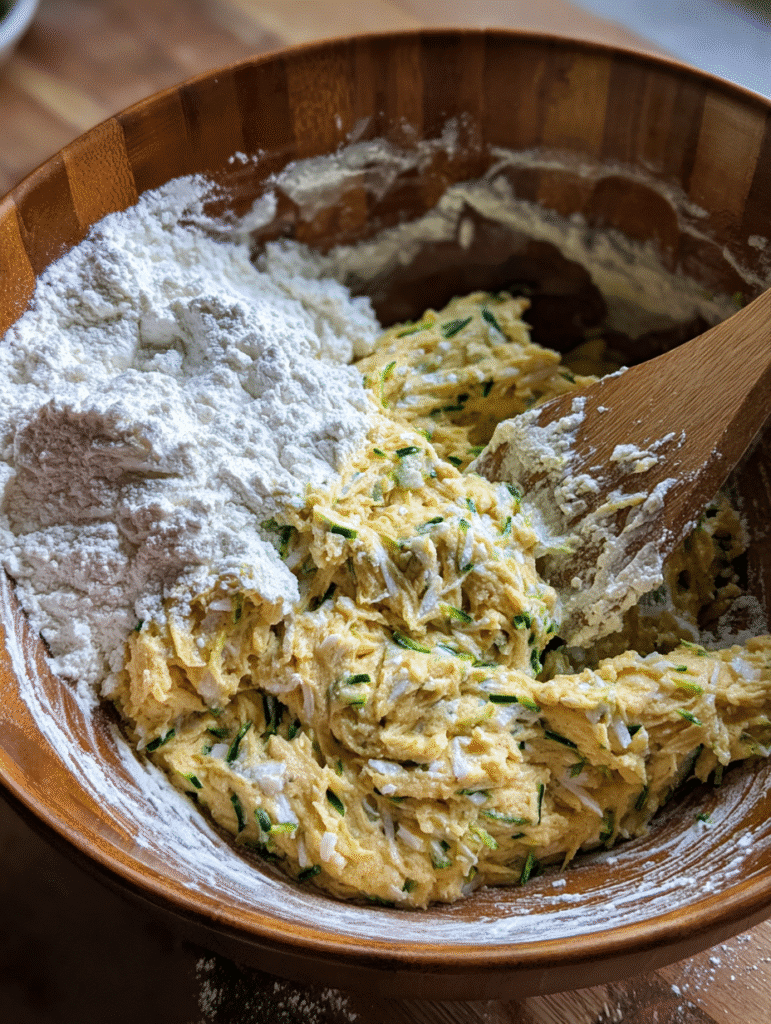
What Is the Healthiest Type of Muffin?
When it comes to muffins, “healthy” can mean different things, lower sugar, higher fiber, more protein, or a better balance of nutrients. The beauty of zucchini muffins is that they check multiple boxes without sacrificing taste.
Zucchini itself is naturally low in calories and high in vitamin C, potassium, and antioxidants. By starting with this veggie-rich base, you can reduce the amount of oil or butter needed, keeping your muffins moist while cutting down on fat. For example, my go-to healthy zucchini muffins swap part of the flour for whole wheat and use applesauce for some of the sugar and oil.
Here are a few easy ways to make them even healthier:
| Swap This | For This |
|---|---|
| White flour | Whole wheat or oat flour |
| Refined sugar | Coconut sugar, honey, or maple syrup |
| Butter | Coconut oil or mashed banana |
If you’re aiming for a protein boost, fold in Greek yogurt or a scoop of protein powder. And for a gluten-free option, almond flour or a gluten-free baking blend works beautifully, just like I use for adapting recipes such as zucchini scarpaccia.
Pro tip: Keep portion sizes in mind. Even a nutrient-rich muffin can turn into dessert if it’s oversized or topped with frosting.
With the right swaps, zucchini muffins can be one of the healthiest baked snacks in your kitchen, perfect for breakfast, school lunches, or post-workout fuel.
Is Baked Zucchini Still Healthy?
Absolutely, baked zucchini keeps most of its nutrients intact, even after time in the oven. While some vitamin C can diminish during baking, minerals like potassium and magnesium remain stable, and the fiber content stays unchanged. That means zucchini muffins still give you a meaningful nutrient boost along with their tender texture and comforting flavor.
One of the best parts about using zucchini in muffins is that it enhances the recipe’s nutrition profile without requiring extra effort. The water content in zucchini helps you cut down on added fat while keeping muffins naturally moist. This is why a batch of moist zucchini muffins can taste indulgent but actually contain less oil than traditional muffins.
If you’re going for maximum health benefits, pair zucchini with whole grain flour and a natural sweetener like honey or maple syrup. The natural moisture from zucchini means you can also bake at slightly lower temperatures, which may help retain even more of its beneficial compounds.
And don’t worry, whether sweet or savory, baked zucchini works well in almost any muffin variation. In fact, I often make a double batch, half classic cinnamon-spiced muffins, half chocolate chip, for the same reason I love recipes like zucchini bread: one baking session, multiple delicious outcomes.
If you want to explore zucchini’s savory side, you can even adapt the muffin method to bakes like zucchini fritters, which prove this veggie shines just as much in a skillet as in the oven.
Why Are My Zucchini Muffins Soggy?
If your zucchini muffins come out heavy, damp, or gummy, the culprit is almost always excess moisture. Zucchini is over 90% water, and if that liquid goes straight into your batter, it throws off the flour-to-liquid ratio and prevents proper rising.
Here’s how to fix it:
- Grate, then squeeze – After grating your zucchini, wrap it in a clean kitchen towel or cheesecloth and squeeze firmly over the sink until no more water drips. This single step can remove up to half a cup of liquid from just two cups of zucchini.
- Salt before squeezing – Sprinkle a pinch of salt over the grated zucchini and let it sit for 5–10 minutes. Salt draws out hidden water, making the final squeeze even more effective.
- Measure after draining – Always measure your zucchini after you’ve removed the excess water.
- Avoid overmixing – Once the dry and wet ingredients are combined, mix only until the flour disappears. Overmixing develops gluten, which makes muffins dense and rubbery.
If you’ve ever had soggy muffins, you know they don’t keep well either, they can turn even wetter by the next day. That’s why I follow the same moisture-control trick I use for zucchini bread with chocolate chips, squeeze first, measure second.
Pro tip: If you like your muffins extra moist but not wet, fold in a small handful of shredded apple or carrot along with the zucchini. It balances sweetness and texture without creating sogginess.
Why Do People Put Zucchini in Muffins?
The short answer: moisture, nutrition, and magic texture. Zucchini is the quiet hero of baking because it blends seamlessly into batter, adding tenderness without changing the flavor. That’s why zucchini muffins taste more like a spiced cake or banana bread than a vegetable bake.
For home bakers, zucchini is a win-win, it’s a great way to use up garden surplus, sneak veggies into kid-friendly snacks, and lighten up recipes without losing richness. It’s the same trick I use in zucchini brownies: no one can tell it’s there, but they’ll notice how soft and moist the crumb is.
Zucchini also acts as a natural fat replacer. Because of its high water content, you can cut back on oil or butter, which lowers the calorie count while keeping the baked goods tender. That’s why healthy zucchini muffins are so popular, you get a satisfying, bakery-style muffin with less fat and more nutrients.
And then there’s versatility. You can go sweet with cinnamon and chocolate chips, or savory with cheddar and chives. Zucchini plays well with almost any flavor profile, just like it does in zucchini scarpaccia, proving it’s one of the most adaptable vegetables in the kitchen.
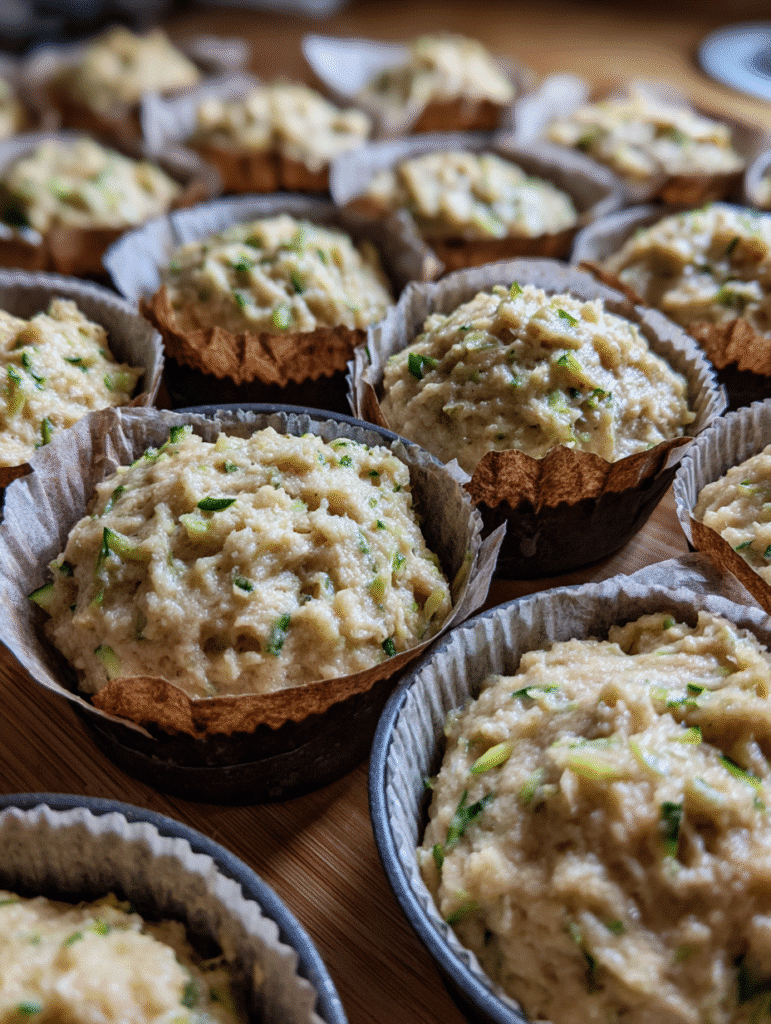
FAQ: Zucchini Muffins Quick Answers
Should you peel zucchini for muffins?
No. The skin is thin, tender, and full of nutrients. Grate it finely and it will melt into the batter.
What do zucchini muffins taste like?
Lightly sweet, soft, and cake-like. Zucchini is mild, so spices, vanilla, and add-ins shine.
What is the healthiest type of muffin?
Whole grain or gluten-free muffins with reduced sugar and healthy fats. Zucchini muffins fit right in.
Is baked zucchini still healthy?
Yes, fiber, minerals, and most vitamins remain even after baking.
Why are my zucchini muffins soggy?
Too much moisture. Squeeze zucchini well before adding to batter.
Why do people put zucchini in muffins?
For moisture, nutrition, and a tender crumb without extra fat.
Conclusion: Zucchini Muffins You’ll Bake Again and Again
Zucchini muffins are the kind of recipe that’s easy enough for weekday baking and impressive enough for weekend brunch. They’re moist, flavorful, and endlessly adaptable, sweet or savory, healthy or indulgent. Whether you’re making a batch for meal prep or sharing them with friends, they’re a smart way to enjoy seasonal zucchini all year round.
For more ways to turn zucchini into magic, explore our zucchini recipes hub, you’ll find everything from breads and brownies to savory fritters. And if you’re craving something classic, start with our zucchini bread recipe and taste why this humble veggie belongs in your baking rotation.

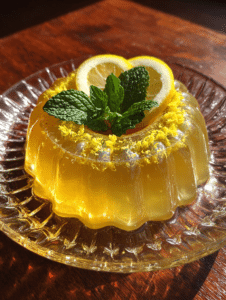
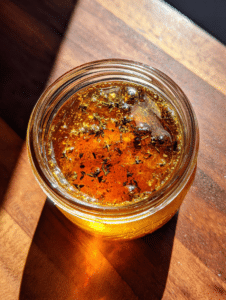
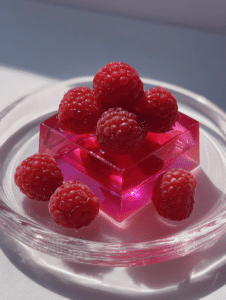
1 thought on “Zucchini Muffins That Stay Moist, Flavorful, and Perfect Every Time”